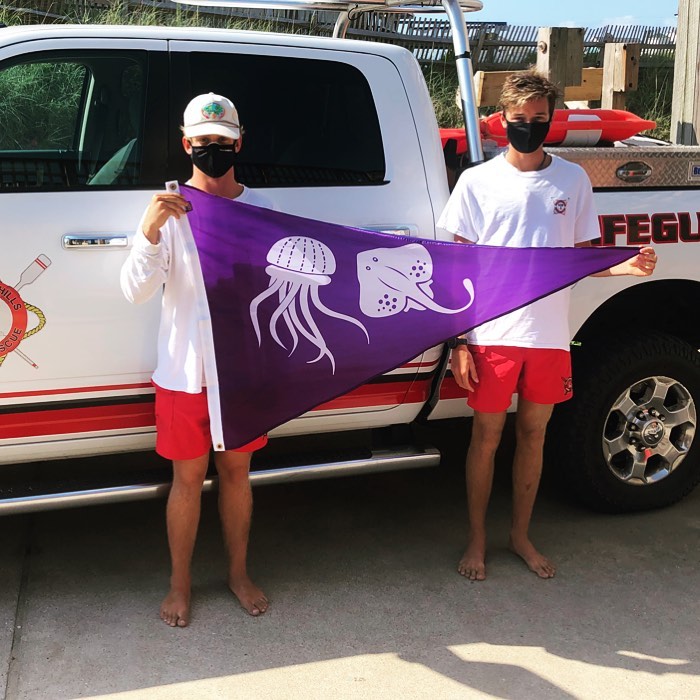
Reprinted from Outer Banks Voice
Along with warm ocean temperatures and crystal-clear water these past few weeks, Outer Banks beachgoers have been seeing another sign of summer lately — jellyfish.
Supporter Spotlight
Having to navigate their way around these ocean critters that can deliver an annoying sting, along with a recent increase in sea lice, has some folks opting to stay on the dry sand.
While sea nettles and other types of jellyfish may seem more ubiquitous in the last week or so, local experts say that’s pretty typical for this time of year and add that they play an important role in the ocean’s ecosystem food chain.
“We tend to get jellies in the summer over the course of a long hot stretch of weather,” said Terri Kirby Hathaway, a marine education specialist at North Carolina Sea Grant. And the clear ocean water that has graced the Outer Banks on and off over the last few weeks has certainly helped beachgoers more easily spot them.
Sea nettles, which tend to thrive in warmer waters, can deliver a nasty, but nondangerous sting if someone brushes up against it. They usually have a red or white tinge and tentacles, and Hathaway says they are typically the ones responsible for “the sting that we feel.”
Kill Devil Hills Ocean Rescue, which began flying flags this year on the beaches to alert beachgoers when jellyfish and other concerning sea life are more prevalent, has hoisted the flags off and on over the course of the summer, but Ocean Rescue Director David Elder said the amount of jellyfish this summer has been on par with other years.
Supporter Spotlight
Jennette’s Pier Director Mike Remige agreed, adding that as a surfer, he hasn’t seen any more jellyfish than during a normal year. Sea lice, which are mostly blue crab larvae, have been increasingly prevalent in recent days and can cause intense itching. Remige said that the larvae are entering their second gravid period in late July and early August, making it more likely that beachgoers could swim through a patch of these tiny sea creatures.
Hathaway cautioned that even if jellies are washed up on the beach or dead, their stinging cells on the tentacles can still function.
“Their tentacles can break off of the bell, yet can still sting even if not connected to the body,” she said, noting that similar to bee venom, some people are more allergic to their sting than others.
Hathaway said that other jellyfish that can be found in Outer Banks waters at this time of year are cabbage-head, or cannonball jellyfish — named after their cannonball shaped bell.
“Those are completely harmless,” Hathaway noted. She added that moon jellies, shaped like an umbrella and easily identified by their four distinct horseshoe-shaped gonads, are the most common along the Outer Banks.
There are several reasons why jellyfish can appear in greater numbers during particular periods over the summer and Hathaway cited one of them. “When we get sea nettles, you can usually look back a few days and there was a big rain even in the Chesapeake Bay watershed,” she explained.
In the late summer and early fall, consistent southeast winds can cause sea life from the Gulf Stream to visit the Outer Banks coastline, including the more dangerous Portuguese man-o-war and colorful blue buttons, which are not considered dangerous but can deliver a sting. Both are related to the jellyfish. In the winter, Lion’s Mane and Mushroom Cap jellies are more frequent on the Outer Banks.
While jellies can be pesky to deal with for beachgoers, Hathaway said they serve an important purpose, providing food to Loggerhead and Leatherback sea turtles, as well as ocean sunfish and spadefish.
This story is provided courtesy of the Outer Banks Voice, a digital newspaper covering the Outer Banks. Coastal Review Online is partnering with the Voice to provide readers with more environmental and lifestyle stories of interest about our coast.







